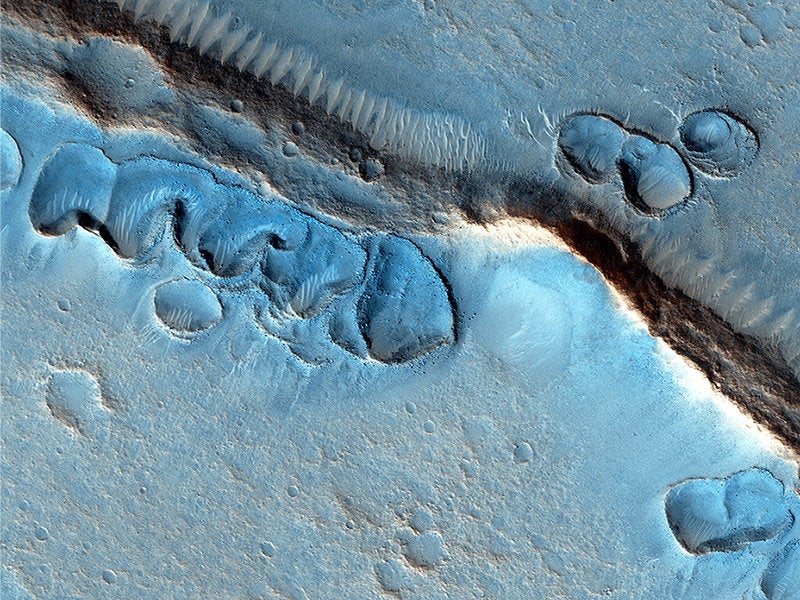NASA launched its Low-Density Supersonic Decelerator -- popularly known as its “flying saucer” -- on Monday, after postponing the flight for several days due to poor weather in Hawaii.
The objective was to examine the performance of two advanced decelerator technologies: a supersonic inflatable aerodynamic decelerator, and a supersonic parachute that will one day help vehicles land on the surface of Mars during manned missions.
Everything went according to plan during the launch, until the flying saucer's 100-foot diameter supersonic parachute -- the largest ever tested -- shredded in the Earth's atmosphere.
The saucer was lifted 180,000 feet (34 miles) into the atmosphere. A massive helium balloon carried it the first 120,000 feet, then rockets boosted it to the edge of the stratosphere.
As you can see in the video above, the supersonic inflatable aerodynamic decelerator surrounding the saucer successfully deployed, stabilizing the vehicle somewhat during mild oscillation.
But the supersonic parachute ruptured when released, Steve Jurcyzk, the associate administrator for the agency's Space Technology Mission Directorate, explained during a conference call on Tuesday.

A supersonic parachute ruptured during a NASA flight test on Monday, as seen from a low-resolution camera onboard the Low-Density Supersonic Decelerator.
The parachute didn't work as planned last year, when NASA tested a similar system. NASA engineers formed a group known as the Supreme Council of Parachute Experts to address that failure and developed a stronger, curved chute for this year's test.
While the parachute's destruction may seem like a mission failure, scientists said it was a success.
"The physics involved with LDSD is so cutting-edge we learn something profound every time we test," Ian Clark, principal investigator for the Low-Density Supersonic Decelerator, said in a press release. "Going into this year's flight, I wanted to see that the parachute opened further than it did last year before it began to rupture. The limited data set we have at present indicates we may not only have gone well down the road to full inflation, but we may have achieved it."
All parts of the craft, including the balloon and several data recorders, are likely to be recovered, allowing NASA scientists to piece together exactly what happened during the mission. They said they expect the analysis to take a month.
NASA says it wants to land astronauts on Mars before 2040. Researchers remained optimistic after Monday's test.
"We've got a little head-scratching," Clark admits in the video above. "Clearly, there are more things out there that we still don't have a good handle on. But it's tests like this and it's the data that we get from these tests that are going to help us understand what those phenomena are and help us design parachutes for the future."

